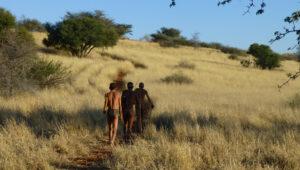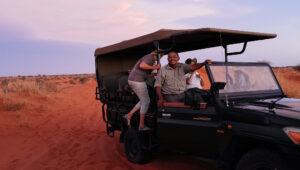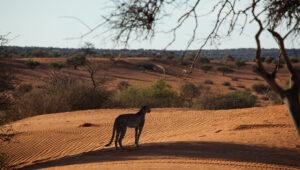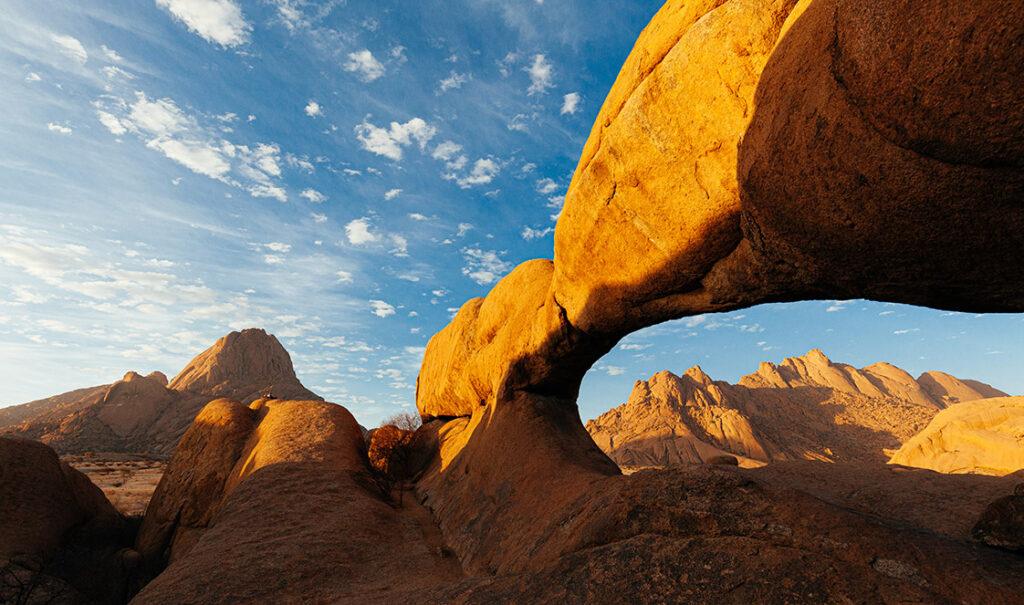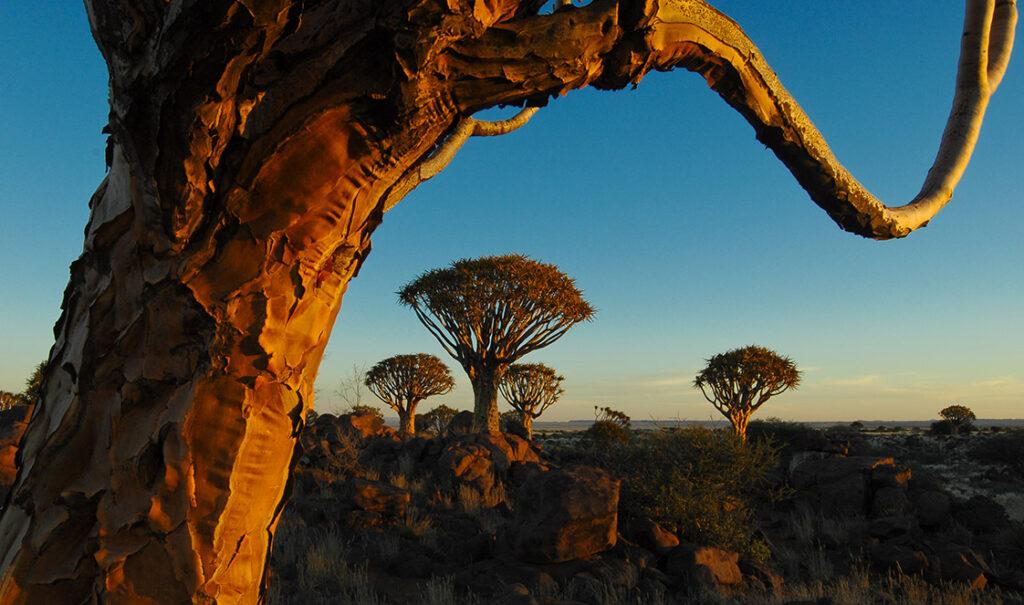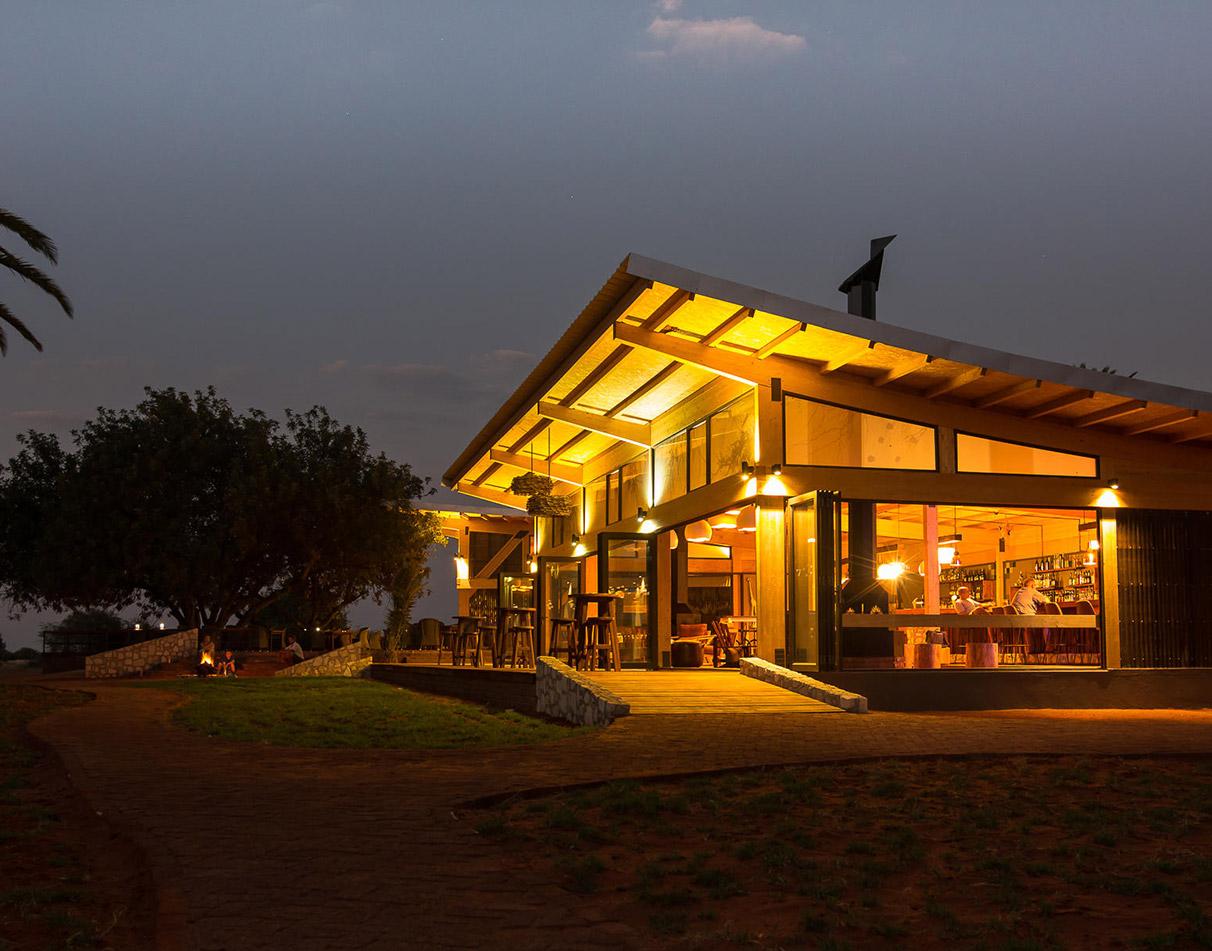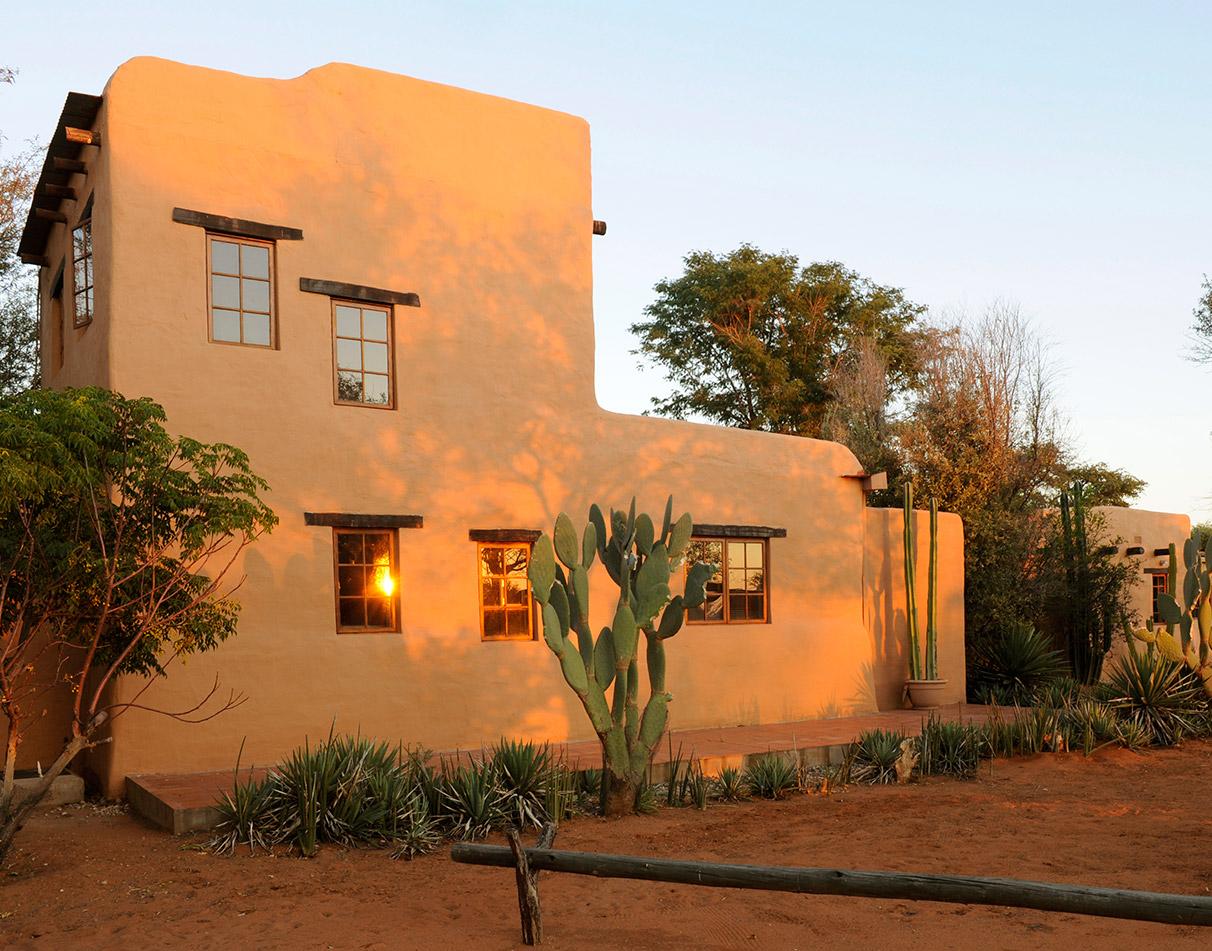Kalahari
900,000 sq. km (350,000 sq. mi)
40 to 60 million years ago
All year
The place without water
The Kalahari derives its name from the Tswana word “Kgalagadi” which means “the place without water”. But despite the arid conditions, the Kalahari in Namibia is home to a variety of animals and plants who survive in this harsh and stunningly beautiful region.

Home to the San/Bushmen, wildlife, and breath-taking landscapes
The Kalahari Desert in Namibia is often overlooked by travellers in favour of the Namib Desert. A Kalahari Desert holiday, however, offers travellers something completely unique. Stunning landscapes of red sand dunes, which can turn green during the summer months, fascinating plant life and wildlife and an insight into the lives of the San/Bushmen awaits those who choose to journey into the Kalahari.
Nothing typifies a Kalahari Desert holiday in Namibia quite like its famous red sand dunes. The only thing which maybe comes close to being as well-known from Namibia’s Kalahari, is the Kalahari salt which you can buy at exclusive food outlets. Much like the salt, the red sand dunes in the Kalahari are special because of the minerals which they contain. Particularly iron oxide (in the sand – not the salt). The desert sand has literally rusted. The result is the beautiful red dunes which you can see in the southern Kalahari in particular.
You can explore the Kalahari desert for example on this self-drive tour and this guided tour.
The Kalahari is one of the ancestral homes of the San/Bushmen, who have lived here for approximately 20,000 years. Traditionally, the San lived a nomadic, hunter-gatherer lifestyle in small cluster groups, stretching across Southern Africa. As other tribes from Africa and as Europeans increasingly moved into the region, the San/Bushmen all over were evermore forced into the Kalahari. Many now live a more sedentary lifestyle and rely less on their traditional hunter-gatherer techniques to survive. However, through tourism in the region and the subsequent San/Bushman experiences which can be booked at various accommodations and cultural living museums, much of this ancient knowledge of the land, its plants, and its animals, is still being preserved. You can gain an insight into these fascinating and remarkable people and learn not only about their customs and traditions, but also about their lives in the modern, contemporary world when travelling through the Kalahari.
One of the main attractions for a Kalahari safari is the Kgalagadi Transfrontier Park. The park is actually located in both South Africa and in Botswana, allowing the animals (and you) to travel freely between the two countries. It was in fact, the first park of its kind in Africa and is referred to as a peace park. Even though the park is not located in Namibia, there is a park entrance on the South African and Namibian border. To access the park, you do not even need to get a visa for South Africa, provided you also exit through the same Namibian gate again. The Kgalagadi Transfrontier Park covers around 38,000 km2 and can provide visitors with unique wildlife sightings in an untamed wilderness. One of the main highlights for wildlife enthusiasts is sighting the famous Kalahari lions. With their distinctive black manes, they really do make a striking appearance. You will not be able to spot the Big 5 here, but there is other wildlife which can keep you fascinated. The park is renowned for its predator sightings, including cheetah, hyena and leopard, as well as various antelope species including springbok, oryx, eland and kudu. The Kgalagadi Transfrontier Park is also known for providing excellent raptor sightings and with a little luck you could spot specimens such as the bateleur, lappet faced vulture and the imposing martial eagle.
The Kalahari region in Namibia offers several accommodation options, including campsites, lodges, and guest farms. There pretty much is something for everyone’s taste. When camping at a remote campsite in the Kalahari, you can truly appreciate the serenity of your surroundings. There are no distractions from your normal everyday life around you. Just the silence of the wilderness and the beautiful landscapes. In the evenings, you can sit around a crackling campfire and be truly amazed at the countless stars above you. If you are more the lodge accommodation type of traveller, then a stay at a Namibian guest farm will be perfect for you. You will be greeted with the warmest hospitality, as most guest farms are still owner run. These farms often cover an enormous area and many are home to a diverse and exciting variety of wildlife. The guest farms are sometimes more like small game reserves of their own in fact. Almost all guest farms will offer you an assortment of activities, which means, you can often stay a couple of nights in the Kalahari and really get to know it and its many marvels.
The Kalahari is raw, authentic, and always worth a visit. No matter which time of year you choose to explore it, or how many times you have visited it before, a Kalahari safari in Namibia can always provide you with wildlife sightings which will stay with you forever. It gives you moments, where you find yourself serenely staring over the beautiful landscapes in complete and perfect silence – just soaking it all in.
The Kalahari is not actually a desert
You can be forgiven for believing that the Kalahari is a desert. But in fact, the Kalahari receives too much annual rainfall to really be classified as a desert.
Tremendous sociable weaver nests
You can witness the biggest bird nests in the world. Sociable weaver nests are built above the ground, can house over 500 birds at a time and weigh up to a ton.
Home of the Devil’s Claw
You can have a closer look at the devil’s claw plant which grows in the Kalahari. Named after its oddly shaped fruit, the plant is said to have various medicinal uses.
WHEN TO GO
Best time to go to the Kalahari in Namibia
The Kalahari experiences an almost desert climate with very little rain and extremes in temperatures. The summers can be glowingly hot, and the night-time temperatures can drop below freezing in the winter. Summer coincides with the green season, when isolated thundershowers can occur (October to April) and the landscapes can transform into a sea of green provided enough rain has fallen. Wildlife viewing on a Kalahari safari tour can be rewarding during both seasons, but for birding, the green season is best.
Dry Season
May to SeptemberDry conditions and mild temperatures but cold nights
Green Season
October to AprilVery hot temperatures but beautiful green scenery
Why to go
Explore the red sand dunes of the Kalahari
One of the most iconic features of the Kalahari is undoubtably its red sand dunes which you can explore on many different activities. On a Kalahari Desert holiday, you can discover the different animals and plants which inhabit the region, or you can simply enjoy the beauty of the landscapes in serene silence. You can also learn more about the San/Bushmen and their ancient survival techniques. The Kalahari is perfect for explorers who wish to journey off the beaten path and discover this unique semi-desert.


If you want to take a break from the rest of the world, the Kalahari is a wonderful place to go. You can truly switch off, immerse yourself in your natural surroundings and find peace and solitude.Mia | Namibia Travel Expert
Where to stay in Namibia's Kalahari
Location
The Kalahari is enormous and covers large parts of Botswana as well as parts of Namibia and South Africa. The greater Kalahari Basin stretches even as far as into parts of Angola, Zambia, and Zimbabwe. The area in Namibia most associated with the Kalahari is in the southeast of the country. Bordering Namibia and South Africa is the Kgalagadi Transfrontier Park, which you do not even require a visa to visit provided you enter and exit on the Namibian side.



Experience Namibia with us
Speak to one of our local advisors
Let's start planning your trip!
We will get back to you within 2 working days.



